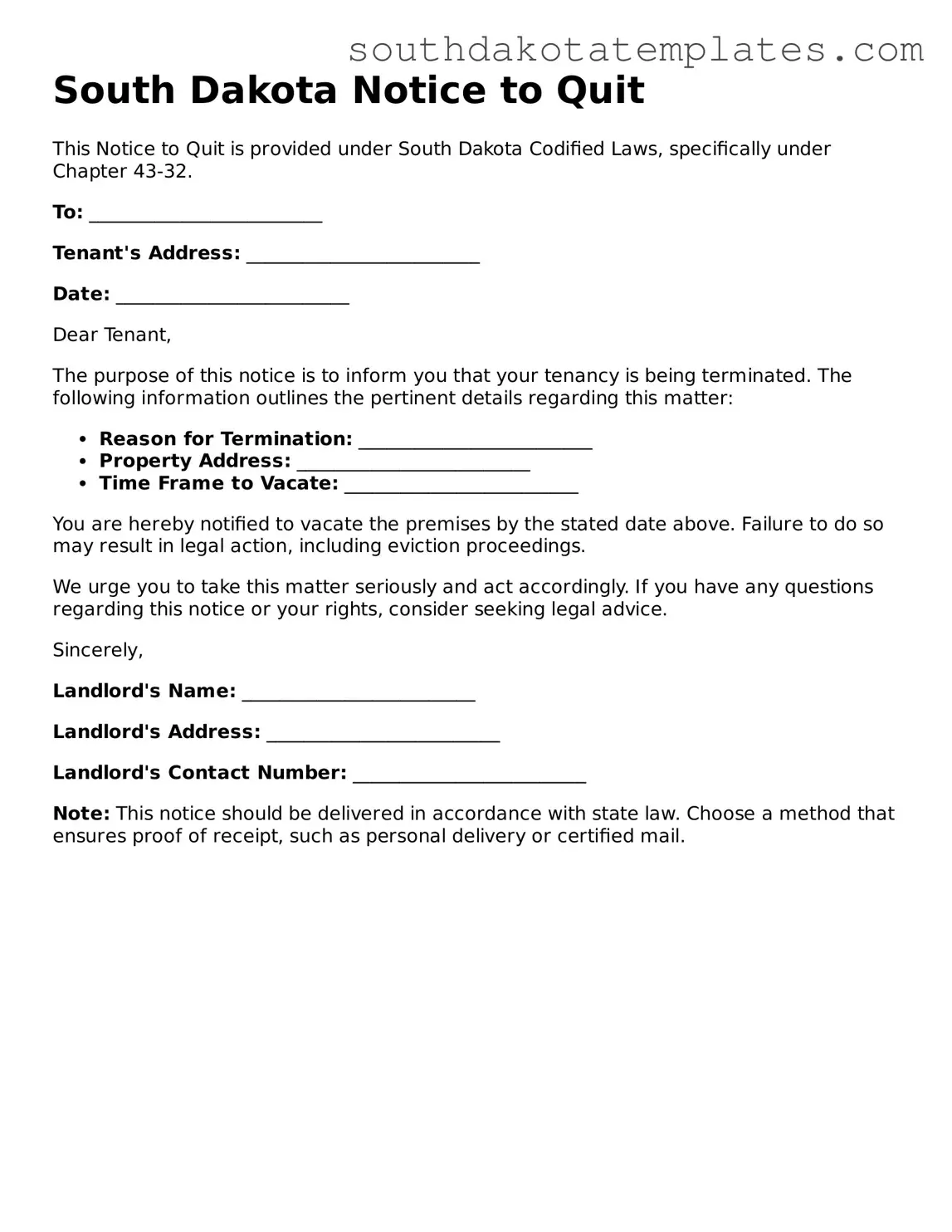Free South Dakota Notice to Quit Document
The South Dakota Notice to Quit form is a legal document that a landlord uses to inform a tenant that they must vacate the rental property. This notice is typically issued when a tenant has violated the terms of their lease or has failed to pay rent. Understanding this form is crucial for both landlords and tenants to ensure compliance with state laws.
Ready to fill out the Notice to Quit form? Click the button below to get started!
Get Notice to Quit
